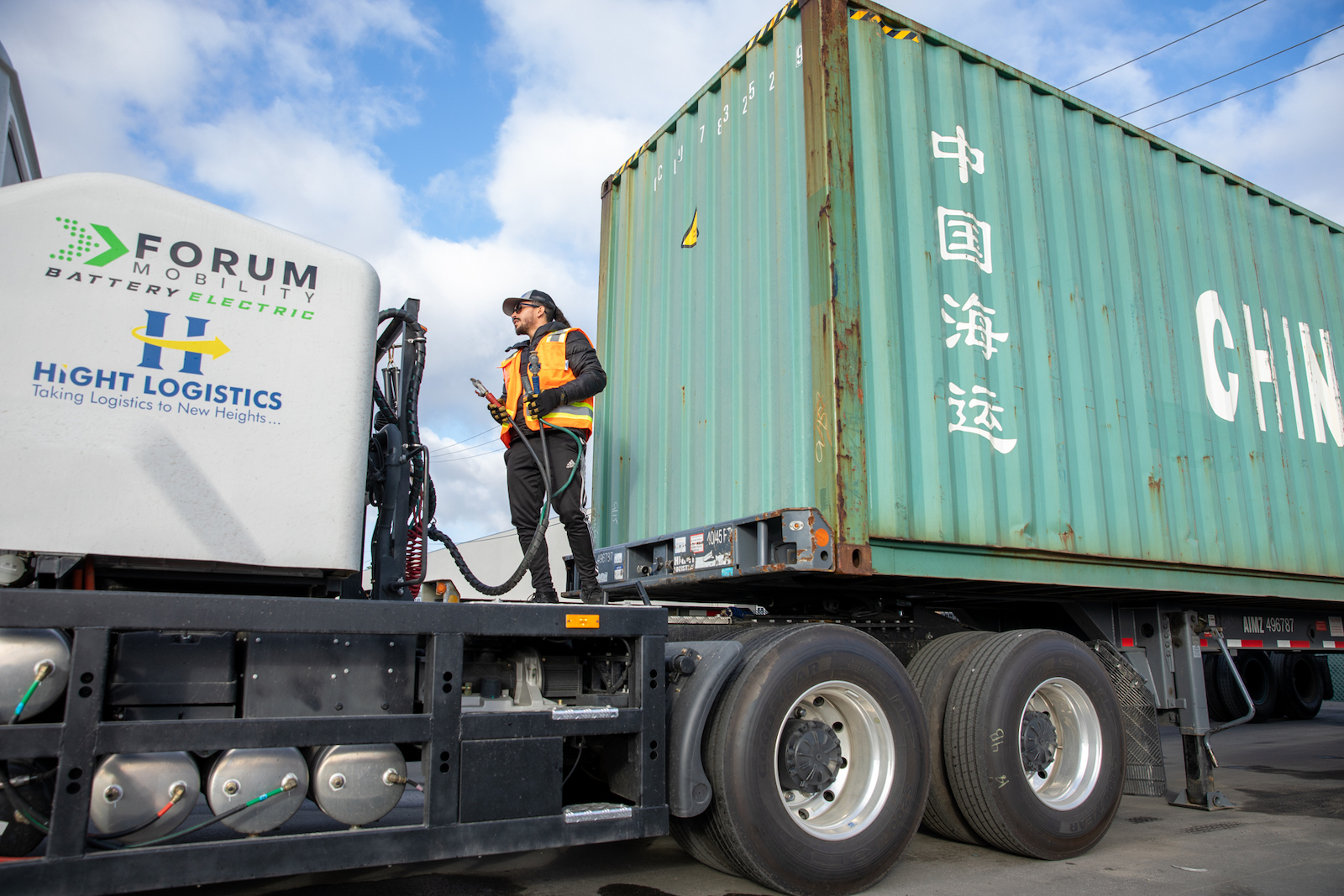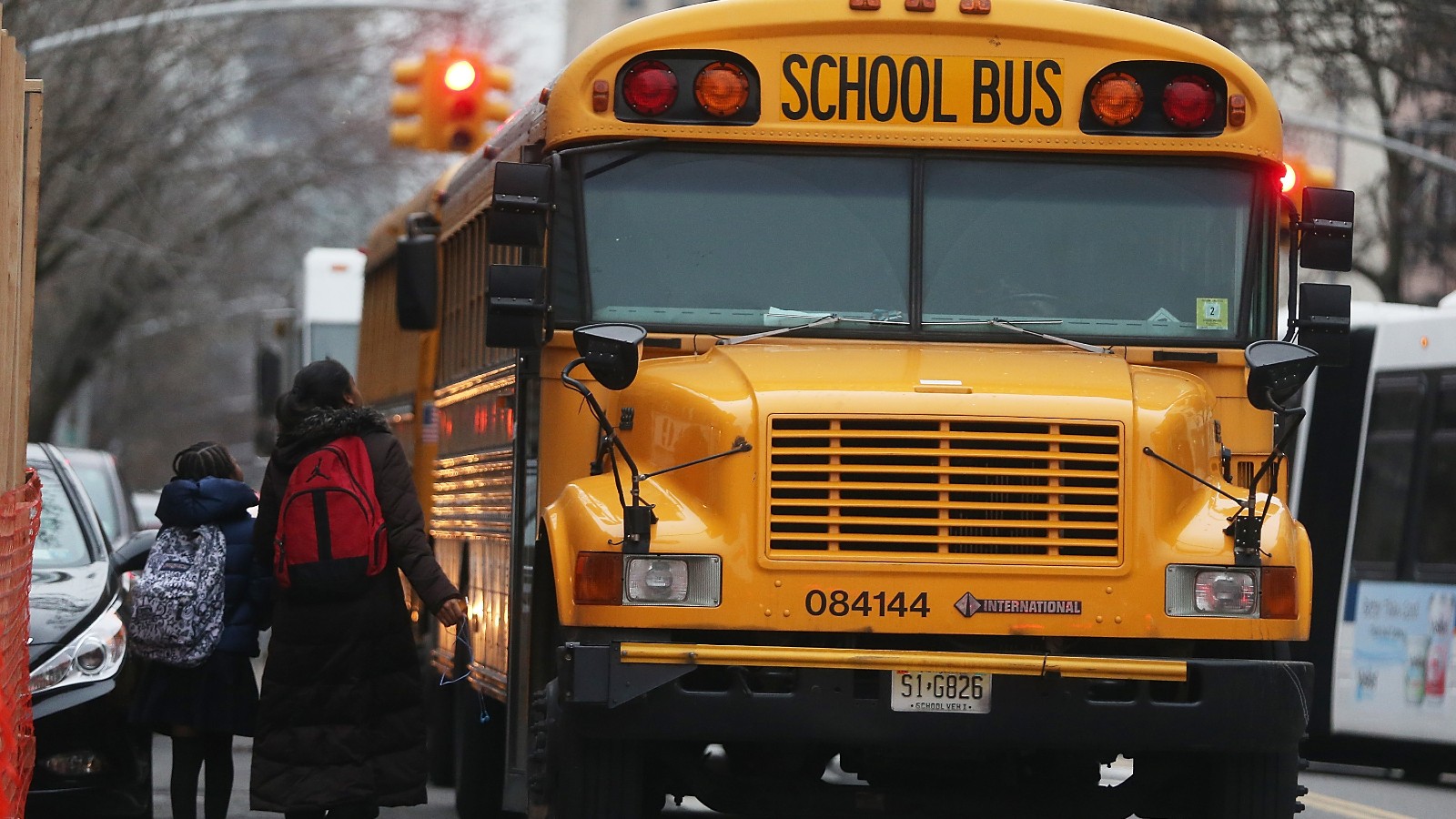Wes Lowe uses so much Claritin that he started an Amazon subscription to avoid running out. His kids take two asthma medications. This reflects the normalcy of pollution in California’s San Joaquin Valley, where residents breathe some of the dirtiest air in the nation.
Lowe lives about 20 miles outside of Fresno, in the valley’s heart. More than a dozen highways, including Interstate 5, run through the region, carrying almost half of the state’s truck traffic. The sky is usually hazy, the air often deemed hazardous, and 1 in 6 children lives with asthma. “You don’t realize how bad it is until you leave,” Lowe said.
He understands California’s urgent need to clear the air by electrifying the trucking industry and pushing older, more polluting machinery off the road. That would reduce nitrogen oxide emissions by 17.1 tons annually by 2037, significantly reduce the amount of smog-forming ozone, and go a long way toward meeting federal air quality requirements. But as a partner at Kingsburg Truck Center, a dealership in Kingsburg, he’s seen how difficult this transition will be.
More than 15 percent of medium- and heavy-duty trucks sold statewide in 2023 were zero-emission. But the road has been bumpy amid growing uncertainty about California’s regulations and the Trump administration’s hostility toward electric vehicles, the clean energy transition, and the state’s climate policies.

The Golden State started its trucking transition in 2021 when it required manufacturers to produce an increasing number of zero-emission big rigs, known as Advanced Clean Trucks, or ACT. The following year, it mandated that private and public fleets buy only those machines by 2036, establishing what are called Advanced Clean Fleets, or ACF.
The Environmental Protection Agency granted the waiver California needed to adopt ACT in 2023. But it had not acted on the exemption required to enforce ACF by the time President Donald Trump took office, prompting the state to rescind its application as a “strategic move” to keep “options on the table,” according to the California Air Resources Board.
The U.S. Senate threw the fate of the Advanced Clean Trucks rule into question when it revoked the state’s EPA waiver on May 22, stripping the state of its ability to mandate the electrification of private fleets, though it can still regulate public ones. Now the one bright side for the state’s efforts to clean up trucking is the Clean Trucks Partnership, under which several manufacturers have already agreed to produce zero-emission rigs regardless of any federal challenges.
All of this limits California’s ability to ease pollution. The Air Resources Board has said the Advanced Clean Fleet rule would eliminate 5.9 tons of nitrogen oxide emissions in the San Joaquin Valley by 2037. Another rule, the In-Use Locomotive regulation, bans internal combustion trucks more than 23 years old by 2030 and would reduce those emissions by another 11.2 tons. Even with those rules in place, the state would have to cut another 6.3 tons to bring air quality in line with EPA rules.

Michael Macor / The San Francisco Chronicle via Getty Images
With the fate of California’s campaign to decarbonize trucking in question, even those who want to see it succeed are wavering. Kingsburg Truck Center started selling battery electric trucks in 2022, but saw customers begin to cancel orders once the state was unable to enforce the Advanced Clean Fleet requirement. Lowe has had to lay off seven people as a result.
“We got heavy into the EV side, and when the mandate goes away, I’m like, ‘Shit, am I gonna be stuck with all these trucks?’” Lowe said. “If I were to do it all again, I’d probably take a lot less risk on the investment that we made into the zero-emission space.”
California remains committed to cleaning up trucking. But the transition will require creative policymaking because the Trump administration’s hostility to the idea makes it “extremely difficult” for the state to hit its goal of 100 percent zero-emission truck sales by 2036, said Guillermo Ortiz of the National Resources Defense Council.
Still, he sees ways the state can make progress. Lawmakers are considering a bill that would give the Air Resources Board authority to regulate ports, rail yards, and warehouses. That would allow regulators to mandate strategies to advance the transition, like requiring facilities to install charging infrastructure. Several state programs underwrite some of the cost of electric trucks, which can cost about $435,000 — about three times the price of a diesel rig.
That’s not to say California isn’t fighting back. It plans to sue the Trump administration to preserve its right to set emissions standards. Losing that will make it “impossible” to ease the Valley’s pollution enough to meet air quality standards, said Craig Segall, a former deputy executive director of the Air Resources Board. “Advanced Clean Fleets and Advanced Clean Trucks arise out of some pretty hard math regarding what’s true about air pollution in the Central Valley and in California, which is that it’s always been largely a car and truck problem,” he said.
Even if the state loses the ability to regulate vehicle emissions and require electrification, Segall is confident market forces will push the transition forward. As China continues investing in the technology and developing electric big rigs, he said, companies throughout the rest of the world will need to do the same to stay competitive. He also said that trucking companies will see zero-emission trucks as an opportunity to lower maintenance and fueling costs. The Frito Lay factory in the Central Valley city of Modesto has purchased 15 Tesla electric big rigs.
Ultimately, the economic argument for ditching diesels is simply too appealing, said Marissa Campbell, the co-founder of Mitra EV, a Los Angeles company that helps businesses electrify. She said the state’s decision to table the Advanced Clean Fleets rule hasn’t hurt business.
“No one likes being told what to do,” she said. “But when you show a plumber or solar installer how they can save 30 to 50 percent on fuel and maintenance — and sometimes even more — they’re all ears.”
Valerie Thorsen leads the San Joaquin Valley office of CalSTART, a nonprofit that has since 1992 pushed for cleaner transportation to address pollution and climate change. She sees the Trump administration’s recalcitrance as nothing more than a hurdle on the road to an inevitable transition. But any effort to ditch diesels must be accompanied by an aggressive push to build charging infrastructure. “You don’t want to have vehicles you can’t charge or fuel,” she said.

The San Joaquin Valley Air Pollution Control District won a $56 million federal grant in January 2024, to build two solar-powered EV charging sites along Interstate 5 with 102 chargers specifically for big rigs. About 45 percent of California’s truck traffic passes through the region, which has over the past 25 years eased nitrogen oxide emission from stationary sources by more than 90 percent. “A majority of the remaining [nitrogen oxide] emissions and smog forming emissions in the valley come from heavy duty trucks,” said Todd DeYoung, director of grants and incentives at the district.
The Trump administration quickly halted grant programs like the $5 billion National Electric Vehicle Infrastructure program that would have expanded charging infrastructure. But DeYoung remains confident that construction of the truck chargers will proceed because work started almost immediately. Similar projects are underway in Bakersfield and Kettleman City.
Not everyone is convinced the infrastructure needs to roll out as quickly as the trucks. Ortiz said emphasizing the adoption of the trucks will pressure the market to ensure chargers come online. “That sends a signal to charging infrastructure providers, to utilities, saying, ‘These vehicles are coming, and we need to make sure that the infrastructure is there to support it,’” he said.
That support is crucial. Bill Hall is new to trucking. He spent decades as a marine engineer, but during the pandemic decided to try something new. He runs a one-man operation in Berkeley, California, and as he carried loads around the state noticed a lot of hydrogen stations. Intrigued, he reached out to truck manufacturer Nikola to ask about its electric hydrogen fuel cell rigs.
His engineering background impressed the startup, which thought he’d provide good technical feedback. Hall bought the first truck the company sold in California, augmenting his personal investment of $124,000 with $360,000 he received from a state program in December 2023. Despite a few initial bugs, he enjoyed driving it. As an early adopter, Nikola gave him a deal on hydrogen — $5.50 per kilogram, which let him fill up for about $385 and go about 400 miles. “I proved that you could actually pretty much take that hydrogen truck to any corner of California with a minimal hydrogen distribution system that they had,” Hall said.
But weak sales, poor management, and other woes led Nikola to file for bankruptcy in February. Without its technical support, Hall no longer feels comfortable driving his truck. The company’s collapse also meant paying full price for hydrogen, about $33 per kilogram these days. Hall is still paying $1,000 a month for insurance and $225 a month for parking. He says the state shares some of the blame for his predicament because it didn’t do enough to support the technology. He would have liked to see it distribute 1,000 hydrogen trucks to establish them and subsidize fuel costs. “I did the right thing, which ended up being the wrong thing,” he said.
Beyond the obvious climate implications of ditching diesel lie many health benefits. In addition to generating a lot of carbon dioxide and nitrogen oxide, the transportation sector is responsible for 80 percent of California’s ozone-forming emissions. “There’s no question that the transition away from combustion trucks to zero-emission would save lives, prevent asthma attacks, and generate significant, significant public health benefits all around the state,” said Will Barrett, senior director for nationwide clean air advocacy with the American Lung Association.
The state has come a long way in the decades since smog blanketed Los Angeles, and the San Joaquin Valley has enjoyed progressively cleaner air over the past 25 years. But people like Luis Mendez Gomez know there is more work to be done, even if the air no longer smells like burning tires. He has lived alongside a busy highway and not far from a refinery outside of Bakersfield for 40 years. It has taken a toll: His wife was hospitalized for lung disease earlier this year, and he knows 10 people who have died from lung cancer.
“This pollution has been going on for years,” Mendez Gomez said. “Nobody had cared before, until now. We’re pushing the government and pushing companies to help us.”
But just when it looks like things might change, the federal government appears willing to undo that progress, he said. ”All the ground they gained is going to go away.”


